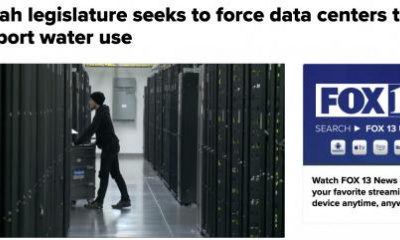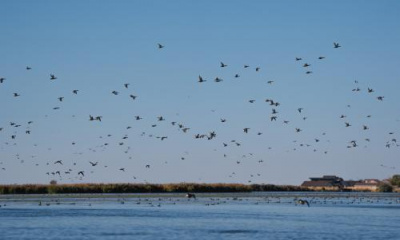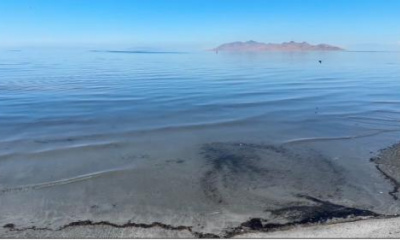SALT LAKE CITY — Utah lawmakers are now eying a study to see if adjustments to a second lake could help get water into the struggling Great Salt Lake.
The Utah Senate approved a motion by Sen. Curtis Bramble, R-Provo, Tuesday to open up a new file toward crafting a bill that would fund a study of Utah Lake and its connection to the Great Salt Lake. The two lakes are tied by the Jordan River, which originates at Utah Lake's northern edge and flows into Farmington Bay by the Great Salt Lake's southern arm.
There have already been plenty of studies on Utah Lake, but many of those have focused on recreation and other functions of the lake and not its connection with the Great Salt Lake. The potential new bill would commission and fund a study to see if there are ways to improve the water supply to the Great Salt Lake through any changes at Utah Lake, Bramble explained during a briefing with reporters after the bill file was announced.
The study would look at any possible options that could increase the flow of the Jordan River into the Great Salt Lake and the cost of any associated projects, among other things. It's estimated to cost about $2 million.
"(We're) taking a more holistic view and saying, 'OK, how can Utah Lake be utilized better to provide a greater supply of water to the Great Salt Lake?'" he said, later adding that he believes it will take about a year for the data to come together.
Senate President Stuart Adams, R-Layton, who is familiar with the bill file, said he believes the idea has "some validity," but the bill is not expected to be drafted and considered until "later" in the legislative session.
It also appears that it will have bipartisan support once it's introduced.
"This is about trying to get some good data and some good science, and I think we all care about the Great Salt Lake, so I'm all for it," said Senate Minority Assistant Whip Jen Plumb, D-Salt Lake City.
Utah Lake is currently 97% of full capacity, up from 44% capacity this time last year, as a result of last year's robust snowpack, per Utah Division of Water Resources data. The Great Salt Lake also benefitted from last year's snowpack, but its levels remain about 5 to 8 feet below what is considered healthy for the lake.
The idea for using Utah Lake to help its northern neighbor originated last year. Former Utah Gov. Gary Herbert, now the executive chairman of the Utah Valley Chamber of Commerce and namesake of Utah Valley University's public policy institute, approached lawmakers with the idea of studying Utah Lake as a possible source to get water for the Great Salt Lake, according to Bramble.
The initial idea sparked multiple conversations between the lawmakers and the institute, as well as others with ties to Utah Lake, including people who were opposed to the Lake Restoration Solutions project that would have dredged the lake and included man-made ideas before the plan fizzled.
It's unclear if there is a way to improve the water connection between the two bodies of water, but Bramble said he intends to make sure the study is crafted "without biasing." That means the final report could outline improvements or determine there aren't any ways to get more water to the Great Salt Lake via Utah Lake.
"The objective is to get more water to the Great Salt Lake. The how-to is what this is all about," he said. "We want it to be a defensible study that's not biased based on special interest and objectives. ... We want the results of it as soon as possible. The problems of the Great Salt Lake aren't going away."
Ben Abbott, a professor of ecology at BYU who was sued by Lake Restoration Solutions over his criticism of the company's plan, confirmed that environmental experts were included in the initial conversations about the study.
He's supportive of the effort, as long as it outlines a scientific way to get water to the Great Salt Lake without harming the natural ecology of either lake and if the study isn't geared to support one specific project. He adds that any study could help link the two lakes in a way that hasn't been done much historically.
"In the past, we've sometimes pitted the two lakes against each other ... and that's super counterproductive," he said. "We know they're a part of the same watershed, and so I hope if (the bill) does move forward, it can help view the lakes as an integrated system rather than as competing parts."







